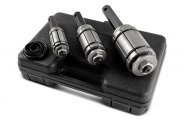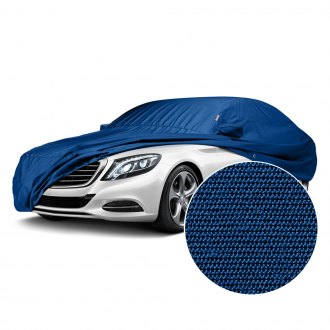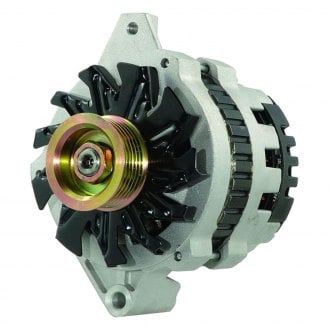Austin Accessories & Parts
Austin Parts
Universal Wheels & Tires
Austin Exterior Accessories
Austin Automotive Lighting
Austin Body Parts
Austin Interior Accessories
Universal Audio & Electronics
 Installation Parts
Installation Parts Stereos
Stereos Speakers
Speakers Amplifiers
Amplifiers Subwoofers
Subwoofers Cameras & Driver Safety
Cameras & Driver Safety Alarms & Remote Start
Alarms & Remote Start CB Radios & Components
CB Radios & Components Antennas & Components
Antennas & Components Mobile Phone Cables & Connectors
Mobile Phone Cables & Connectors Bluetooth
Bluetooth Equalizers & Processors
Equalizers & Processors Batteries & Power
Batteries & Power Video
Video Radar Detectors
Radar Detectors GPS Systems
GPS Systems Mounts & Chargers
Mounts & Chargers Action Cameras & Accessories
Action Cameras & Accessories
Austin Automotive Tools
 Oil Change Tools
Oil Change Tools Brake Service Tools
Brake Service Tools Suspension & Steering Service Tools
Suspension & Steering Service Tools Spark Plug & Ignition Tools
Spark Plug & Ignition Tools Wheel & Tire Service Tools
Wheel & Tire Service Tools Engine Service Tools
Engine Service Tools Fuel System Service
Fuel System Service Transmission & Drivetrain Service Tools
Transmission & Drivetrain Service Tools Pullers & Installers
Pullers & Installers Cooling System Service Tools
Cooling System Service Tools A/C Tools & Equipment
A/C Tools & Equipment Electrical System Tools
Electrical System Tools Diagnostic & Testing Tools
Diagnostic & Testing Tools Exhaust System Service Tools
Exhaust System Service Tools Auto Glass Tools
Auto Glass Tools Lockout Kits
Lockout Kits Jacks
Jacks Automotive Lifts & Stands
Automotive Lifts & Stands Repair Manuals
Repair Manuals Automotive Paint
Automotive Paint EV Charging
EV Charging Battery Chargers & Jump Starters
Battery Chargers & Jump Starters Dollies & Movers
Dollies & Movers Creepers
Creepers Auto Detailing
Auto Detailing Key Cutting Machines
Key Cutting Machines Dent Repair Tools
Dent Repair Tools Service Carts
Service Carts Vehicle & Parts Protection
Vehicle & Parts Protection
Herbert Austin was an eminent designer and engineer, and adept at anything mechanical. He was born in England, but immigrated to Australia in 1884, where he first distinguished himself making improvements to sheep shearing machinery at the Wolseley Sheep Shearing Company. Austin was made company director in 1893, the same year that production was moved to England. Manufacture and sales of shearing machinery was a seasonal business, so the company branched out to make use of their facilities and workforce year-round, first making bicycles, and then automobiles. In 1901, the automotive part of Wolseley was purchased by Vickers, Sons & Maxim, becoming the Wolseley Tool & Motor Company. Austin became general manager of the new firm, but after a disagreement about engine design, he resigned his post in 1905 to start his own automobile company, taking key personnel from Wolseley with him. The company he established, Austin Motor Company Limited, would go on to become one of the most prominent British motor vehicle manufacturers of the 20th century.
The first Austins were luxury cars, offered in touring, coupe, landaulet, and limousine body styles, and the company’s clientele included royalty and nobility. By 1914, when Austin became a publically traded company, it was one of the top 5 auto makers in Britain. During World War I Austin made guns, shells, aircraft, and trucks for the Allies, and the company’s facilities and workforce were considerably expanded to fulfill the government contracts. However, postwar car sales were disappointing, and Austin went into receivership in 1921. Faced with possibly going out of business, and a newly instituted horsepower tax that penalized the larger engines typically used in big cars, Herbert Austin concluded that the salvation of his company was in a small car. The resulting Austin 7 became one of the most popular British cars in history. Introduced in 1922, the economical 7 was very small, much smaller than a Model T Ford. It weighed only 794 lbs. and had a 75” wheelbase. The 747cc in-line 4-cylinder side-valve engine made only 10 horsepower, but that was enough to power the diminutive 7, which was manufactured as a touring car, saloon (sedan), cabriolet, coupe, and 3-door van. By the time production ended in 1939, over 290,000 Austin 7s had been built. The car was also built under license by many companies, including BMW, American Austin and Nissan.
The Austin 7 not only saved the Austin Motor Company, it enabled it to weather the economic depression of the 1930s, which was the end of the line for many other auto makers. The company’s best-selling car of this decade was the new Austin 10, which except for during WWII remained in production until 1947. The 10 was larger than the 7, but smaller than the Austin 12 and 14, and available in touring, saloon, cabriolet, van, and even pickup body styles. In 1934 a sports model called the Ripley was added to the 10 range, which made 30 horsepower courtesy of a downdraft carburetor and high lift camshaft. During the war, Austin manufactured trucks and aircraft. While most of the company’s postwar line were rehashed 1930s models, the first new car was the 16 hp, which was notable for its OHV engine, the first one produced by Austin. But while the the16 hp still used a prewar chassis and body, the 1949 A90 Atlantic was an all-new car. Available as a 2-door coupe or convertible, the A 90 had a very rounded shape, with sweeping fender lines that carried through the doors and into the fender skirts. Unique features of the A90 included an additional headlight mounted centrally on the grille, a rear window that could be lowered into the trunk for increased ventilation, and the availability of a fabric roof cover for the coupe, which gave the closed car the look of a convertible.
In 1952 Austin merged with its longtime rival Morris Motors to form the British Motor Corporation (BMC). The same year the company also entered into two separate but significant agreements. Racing driver/engineer turned auto maker Donald Healey had developed a sports car that was based on the A90’s chassis and drivetrain. When Leonard Lord, the head of Austin Motor Company, saw the Healey 100 at the London Motor Show, he was so impressed that he bought the rights to the car. The Atlantic had been aimed at the American sports car market, but had not sold well, and the rebadged Austin-Healey 100 would give the company a very successful replacement. The other deal was with the American automobile manufacturer Nash Motor Company. Nash had designed its own small economy car, but determined that for the car to be affordable it had to be built using existing mechanical components. At the time only British and European auto manufacturers made components for a car of such small scale. After negotiating with several European companies, Nash chose Austin to build the Nash Metropolitan. Available as an 1825 lb. hardtop or 1785 lb. convertible, the Metropolitan was smaller than a Volkswagen Beetle and delivered over 40 mpg when tested on fuel economy runs.
In the mid-1950s world events caused a fuel shortage in Britain, which resulted in rationing and skyrocketing prices. The demand for large cars dropped and many consumers turned to small, fuel efficient “bubble” cars from Germany like the BMW Isetta, Messerschmitt, and Heinkel. Needless to say, to have such German cars invading British roads so soon after the war was disturbing to many, and particularly to Leonard Lord, who was now head of BMC. In response, Lord instructed the designer Alec Issigonis to develop a smaller version of the Morris Minor and put it into production as soon as possible. Because the car had to be as small as possible while still providing adequate room for 4 people, Issigonis designed the car to have front-wheel drive, with a transversely mounted 4-cylinder engine. Even the radiator was mounted inside the left front fender to reduce vehicle length. To further economize space, the transmission was mounted below the engine and both units shared the same oil sump. The new car went on sale in 1959 and was sold through both Morris and Austin dealers as the Morris Mini Minor and Austin Seven.
The Mini, as Both Austin and Morris versions would soon be branded, was affordable and economical to operate, but it also proved to be quite a good performer. The wheels had been positioned at the corners to maximize interior space, but this factor coupled with the short wheelbase, light weight, and firm rubber cone suspension, gave the car excellent maneuverability and road holding. The Mini’s engaging appearance and fun-to-drive factor endeared it to celebrities and many others who were interested in more than fuel economy, and the car sold in huge numbers. Several Mini variants were produced over the years including a panel van, station wagon, and pickup, but the most famous was the Mini Cooper. Formula One and rally car builder John Cooper saw the Mini’s potential and convinced BMC management to allow him to create a performance model. The Mini Cooper went on sale in 1961, with the original and subsequent versions treated to the usual hot-rodding mods including larger engines with stronger components, multiple carburetors, a close ratio transmission, and disc brakes instead of drums. The Mini Cooper, and later, more powerful Mini Cooper S racked up numerous Rally, Touring Car, and Endurance Racing wins and championships. By the time Mini production ended in 2000, over 5.3 million had been produced, making it the best-selling British car of all time.
BMC merged with the Leyland Motor Corporation in 1968 to form British Leyland. Over the next two decades, there were a few Austin models that sold well in Britain, including the Allegro in the 1970s and the Metro in the 1980s, but overall British car sales continued to decline in the face of imported competition. In 1982, British Leyland was renamed the Austin Rover Group. Five years later, the Austin brand was discontinued and the company became simply the Rover Group. In 1994 BMW acquired the Rover Group. But after continuing losses, in 2000 BMW retained the Mini brand, but sold Land Rover to Ford, and the remaining car making business to the Phoenix Consortium, where it became the MG Rover Group. The Mini enabled BMW to enter the sporty compact market with an established and credentialed brand, but it was obvious that a new, more modern car was needed. The new Mini, a creation of American stylist Frank Stephenson, debuted at the Paris Auto Show in 1999. The last of the original Minis was produced in October 2000, and the first of the new generation went on sale the following July.
As one of the foremost British automobile manufacturers, it’s not surprising that some of the most significant cars in automotive history rolled off of Austin assembly lines. From the classic Austin 7, arguably the world’s first small economy car, to its spiritual successor the Austin Mini, Austin was an innovative market leader. But no matter what Austin model you cherish, we can help enrich your ownership experience with our line of maintenance supplies, repair parts, accessories, and appearance products.
Dress your vehicle up. Keep it running at its peak or unleash its hidden power. Make it look like it just rolled off the show room floor. Take care of it and maintain it. You name it, we've got it. We have gathered everything you need to make your Austin perfect both inside and out. CARiD's job is to meet your every expectation and provide you with quality and durable accessories and parts designed with excellence in mind. Whether you're after luxurious style, brisk performance, or anything in between, our wide assortment covers all the bases.
Browse by Model
Popular Products
-
 $34.69 - $559.62
$34.69 - $559.62 -

-
 $6.64 - $9.10
$6.64 - $9.10















